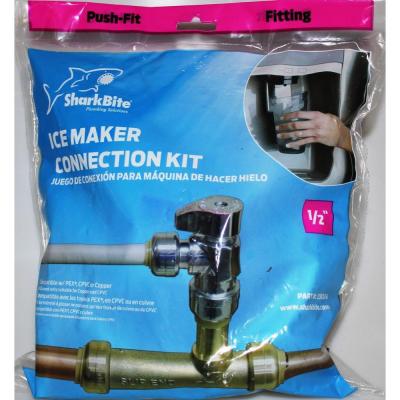knight1fox3
Jedi MASTER & Friend of Capt. Solo
Thanks for the feedback. I think I'm going to forego the saddle type and go with this kit instead:That's what feeds my ice machine in the freezer. The only minor issue I've had was with sudden low flow. I simple closed the valve and reopened it. There must have been a mineral blockage.
I've had it installed for about 8 years.
yeah they work pretty well, another option is to use those shark bite fittings, but then you have to cut the pipe

Thanks for the info.Go with the shark bite fittings. Little expensive, but well worth it. Just make sure the fitting is pushed on straight so you don't ruin the gasket.
Problem is there's no good location at the moment that has an existing valve (i.e. I'm not tapping in by my kitchen sink). But a good suggestion I will keep in mind.Why not get one of these?? Just unscrew old single valve, apply a little Teflon tape and screw on new double valve. Easy piesy
Exactly my thought on the leak. And why in certain states plumbers aren't even allowed to use them. Though @matt267 PE seems to have had good luck.I dunno, those saddle valves seem like a leak waiting to happen. The pipe is under 40+ psi of pressure and all that's holding the water back is a little bit of rubber, which tends to dry out over time.
Shark bites, saddle valves. . . where's you guys' man cards? Cut the pipe, slap in a valve/fitting and solder it in.
The only soldering equipment I have is in my "geek" tackle box for electrical circuits during my undergrad lab days. I've also been told that copper soldering can be thought of as an art. I'd rather not "experiment" with something like this and try to go a different route. Shark bite components seem to be getting good reviews.





















